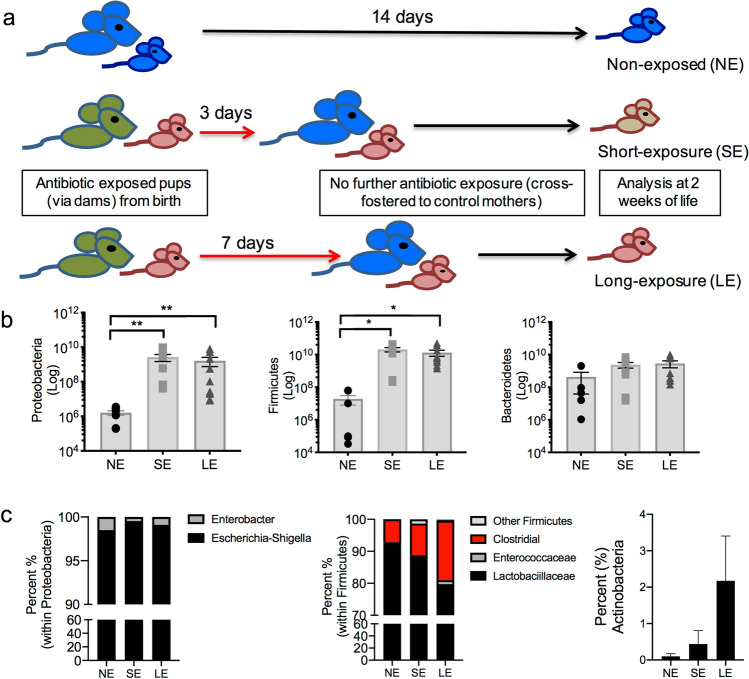Figure 1.
SE and LE mice had altered bacterial colonization at 2-weeks-old. (a) Experimental design. Control mice were born to mothers not exposed to antibiotics (blue mice) and sacrificed at 14 days of life (NE). Antibiotic exposed offspring were born to dams placed on broad-spectrum antibiotics (green mice) during gestation and offspring were exposed to antibiotics via their dams for either 3 days (SE) or 7 days (LE) by cross-fostering to mothers not on antibiotics (blue mice). All neonatal mice are analyzed at 2 weeks of life. (b) qRT-PCR of colonic fecal contents in neonatal mice for major bacterial phyla. SE and LE mice had an expansion of Proteobacteria and Firmicutes. (c) 16s rRNA sequencing identification of bacteria at the genus level reported within Proteobacteria and Firmicutes. Within Proteobacteria, LE mice had an increase in Escherichia. Within Firmicutes, LE mice had an increase in Clostridia. Actinobacteria was increased in LE mice. Data shown are representative of three experiments with a total of 6–10 mice in each group. Next-generation data are pooled samples (3 mice) of 3 mice/group. Data are depicted as mean ± SEM (*P < 0.05, **P < 0.01). Statistical tests used were ANOVA (b) and Kruskal–Wallis (c).

